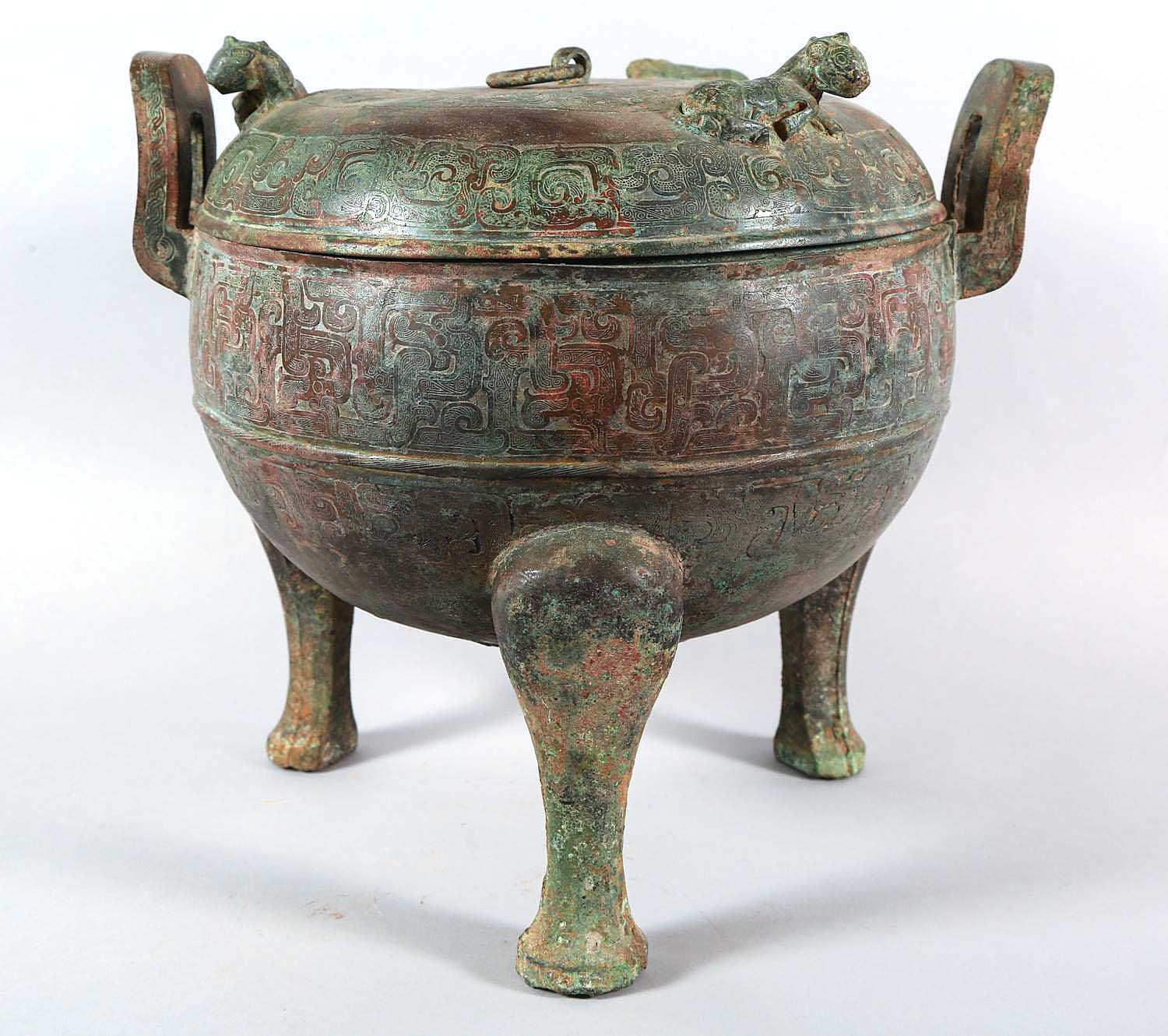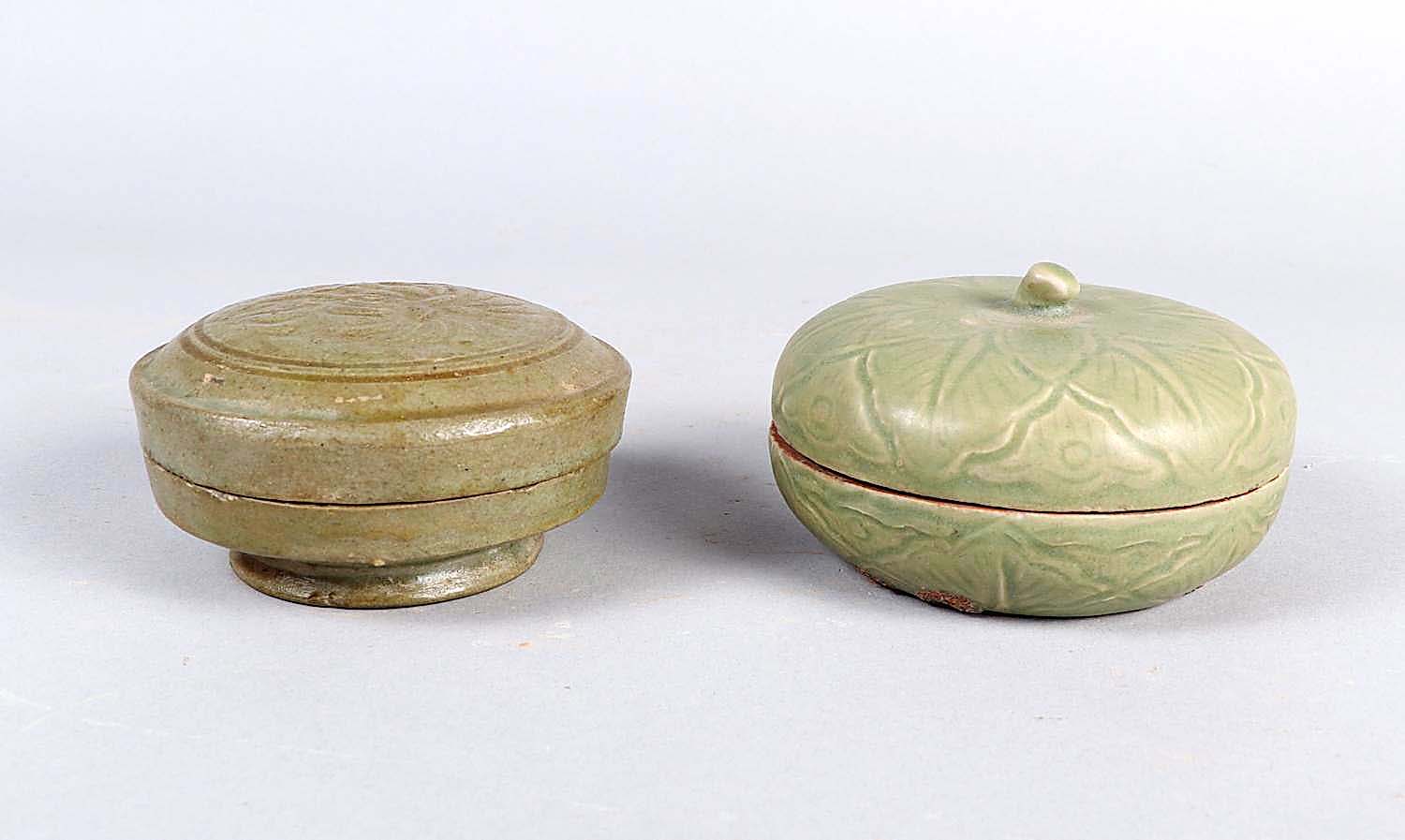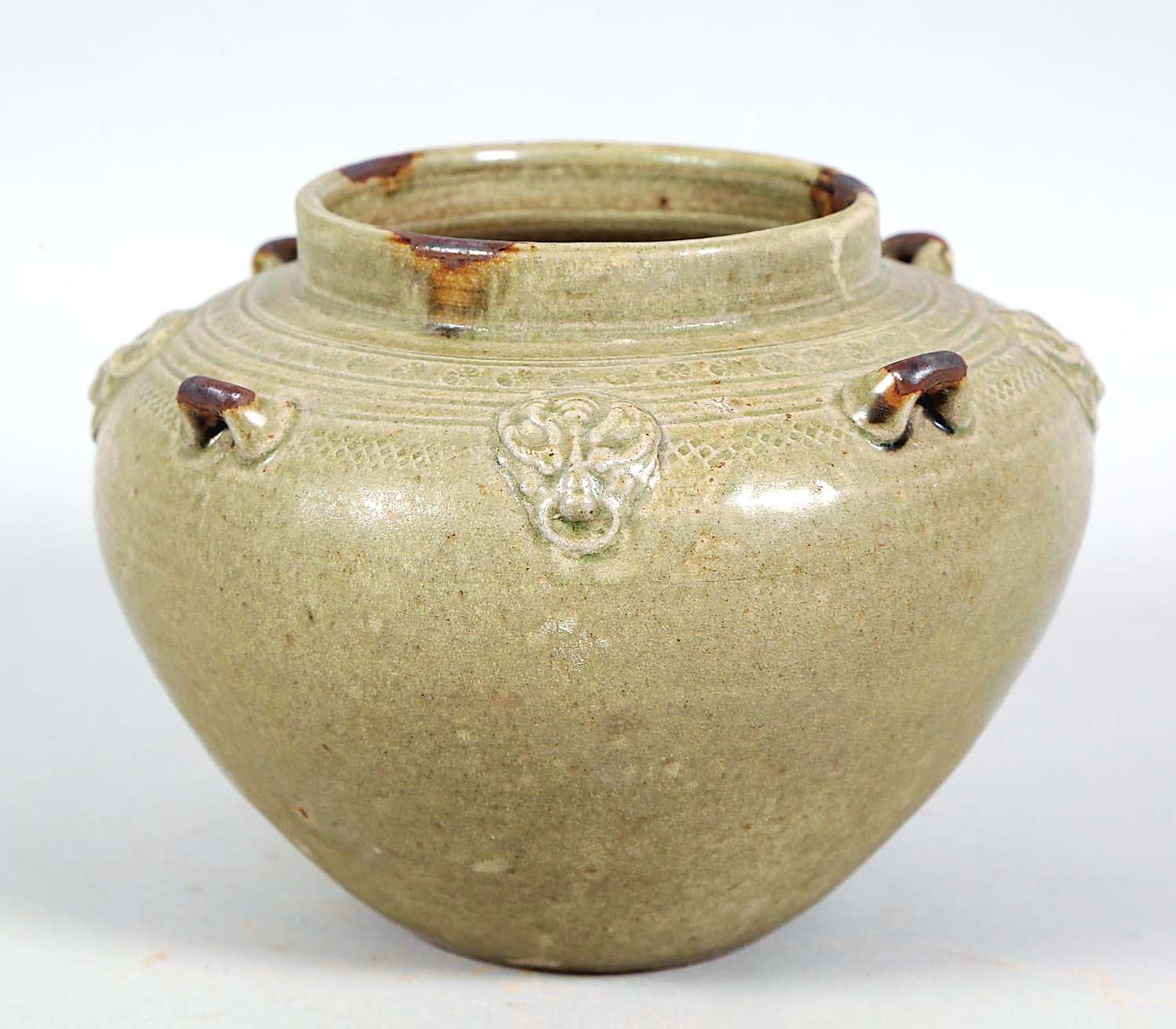
Stabbing a sale-high $20,025, this Indian Moghal dagger with a white jade handle inset with gold and ruby, from the Seventeenth or Eighteenth Century, measured 15-7/8 inches long total ($2/4,000).
Review by Carly Timpson
NEW BRAUNFELS, TEXAS — Lark Mason Associates closed their auction of Chinese Bronzes and Ceramics from a Prominent Collector on March 27. The 684 lots on offer were all sourced from the estate of noted collector, dealer and curator Daniel Wolf (1955-2021). In total, the sale realized $163,455 and the majority of bidders were from the United States. As Lark E. Mason, Jr, shared, “We anticipated that this group of items would be largely purchased and bid upon by audiences in the United States. A combination of international regulations, fragility and shipping costs made it difficult for buyers outside of the United States to participate. We were very pleased at the strong response that we received from a domestic American buyer base.”
The sale was led by an object that fell outside of the titular categories of Chinese bronzes and ceramics. After receiving 45 bids, an Indian Moghal white jade-handled dagger from the Seventeenth or Eighteenth Century slashed its $2,5/4,000 estimates to achieve the sale-high price of $20,025. With a polished Damascus blade, the dagger’s carved jade handle was inset with gold and ruby details, and in total, it measured just under 16 inches in length.
Achieving the second-highest price of the day was a Chinese bronze ding, or cauldron with handles and legs. This tripedal cooking vessel was highly patinated and featured a patterned band beneath its rim. Made circa 1046-256 BCE during the Western Zhou dynasty, the ding had upright handles affixed to its rim and featured several repairs. A buyer claimed the vessel for $12,188.

This ding, or archaic Chinese bronze cooking vessel, from the Han dynasty, circa 206 BCE-220 CE, measured 10¾ by 12 inches and weighed just over 8 pounds; it brought $7,813 ($2,5/4,000).
In the third-highest position was another bronze ding. This archaic vessel was from the Han dynasty (circa 206 BCE-220 CE) and included its lid, which had three animal-form finials to its lid, though one’s head was broken off. Luckily for the buyer, the detached head was included with the purchase, and the vessel was claimed for $7,813. This example, also on three legs, had an allover repeating pattern throughout its body and similar pattern in bands on the lid’s surface.
Several group lots achieved notable results, with a set of five bowls from the Henan province made during the Tenth to Twelfth Century leading the category. These brown and black glazed bowls ranged in size from the smallest having a diameter of 4¼ inches, to the largest having a diameter of 7-1/8 inches. The lot of five sold together for $6,563, eclipsing their $400 high estimate. A group of six — including bowls, a censer and jars — was bid to $3,750. These, all with various glazes, were made during the Tenth Century and later and showed signs of burial, including residue on the surfaces.
Made during the Han dynasty and later, a bronze partitioned lidded vessel and an iron sold together for $3,564. The 3½-by-5¼-inch vessel had a hinged lid that stood upright, forming a second-level basin with spout, when opened. The iron, which measured 7½ inches by 5¼ inches, had panels of foliate decoration on the outside of its pan and its hollow handle, into which a dowel would have been inserted, was intact.

Two Chinese celadon covered boxes, Twelfth/Fourteenth Century, 3¼ and 3½ inches in diameter, passed their $200/400 estimate to earn $2,853.
Two celadon covered boxes from the Twelfth to Fourteenth Century brought $2,853. The smaller of the two, with a diameter of 3¼ inches, had a flat cover, detailed on the top with a flower carving. The other, measuring 3½ inches in diameter, had an allover floral pattern and a small bud handle on the lid. On the underside of this one, there was leftover kiln grit, which may have been a charming characteristic to collectors.
While not described in the catalog as celadon like the boxes, another green-glazed item brought $2,750. The outside of this bowl had vertical ridges impressed into it and the inside was detailed with an elaborate floral pattern. Measuring 2¾ by 8-7/8 inches, the bowl had a small chip to its foot and retained some kiln grit. Another bowl, this one with a white glaze, was finely incised with a flowering vine on the inside and was smooth on the outside. From the Tenth to Twelfth Century, this example measured 2-7/8 by 10-3/8 inches and brought $2,125.
A green-glazed ovoid jar from the Third to Fifth Century held a $2,485 result. Measuring 7¼ inches at its widest point, the jar was affixed with four small handles with molded emblems — possibly dragon heads — between each.

This Chinese ovoid jar, Third/Fifth Century, was 5¼ inches high and finished for $2,485 ($200/400).
Though its rim was cracked and a moderate chip was missing, bidders took a liking to a small white-glazed ceramic cup. Made during the Sui to Tang dynasty, circa 581-907 CE, the cup measured 3-1/8 inches high by 3-3/8 inches in diameter. Its buyer took it home for $2,148.
Departing from the theme of vessels and cookery, a porcelain pillow in pale green glaze went out at $1,793. This pillow was impressed with depictions of crawling and playing children on the surface of each of its 11¾-inch-long sides and had child’s-head crests on the two small ends. Though the pillow was undated, unique details that may be an indicator to its new buyer included hardened burial residue on the surface, firing faults and staining.
Prices quoted include the buyer’s premium as reported by the auction house. For more information, www.larkmasonassociates.com or 212-289-5524.
















